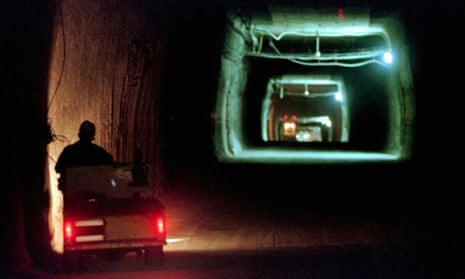A radiation leak at an underground nuclear waste dump in New Mexico was caused by “chemically incompatible” contents, including cat litter, that reacted inside a barrel of waste causing it to rupture, scientists said on Thursday.
The US Energy Department report on last year’s radiation accident at the Waste Isolation Pilot Plant (WIPP) near Carlsbad showed that a drum of waste containing radioisotopes like plutonium was improperly packaged at the Los Alamos National Laboratory near Santa Fe before arriving for disposal.
The improper mix in the barrel, including the wrong sort of cat litter used to absorb liquids, sparked a chemical reaction causing it to heat up and generate gases that dislodged its lid, spewing radioactive materials, investigators found.
The radiation leak that began in the WIPP disposal chamber half a mile below ground on 14 February, 2014, “did not result from a detonation,” the report showed.
The accident exposed 22 workers to radiation in amounts not expected to threaten their health, according to Nuclear Waste Partnership LLC, the contractor that operates the plant.
The accident indefinitely suspended key operations at the site, the Energy Department’s only permanent underground repository for certain types of radiological waste tied to US nuclear labs and weapons sites.
In September, Energy Department officials estimated the cost of the initial recovery of the dump at $240m and said it might be two years or more before it is fully operational.
The report released on Thursday confirms the agency’s preliminary theories about the cause of the costly mishap and also clarified that just one barrel of waste from Los Alamos was to blame.
New Mexico slapped the Energy Department with $54m in fines in December for violations of state hazardous waste permits tied to WIPP and the Los Alamos lab.
Also last year, a team of federal inspectors released a report that cited chronic lapses in safety procedures at Los Alamos that contributed to the radiation leak.
The lab’s “waste processing and safety-related control procedures should have prevented the addition of these potentially incompatible materials,” the inspectors said of the ruptured waste barrel.
The Energy Department could not be reached immediately for comment late Thursday.
